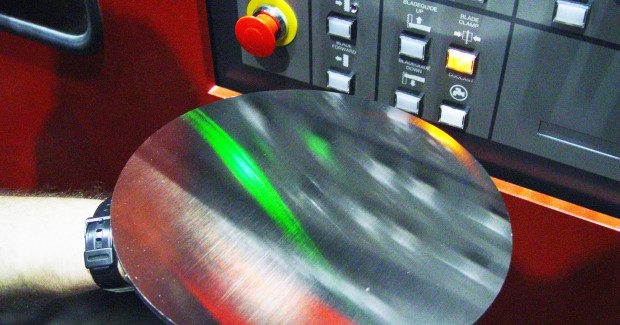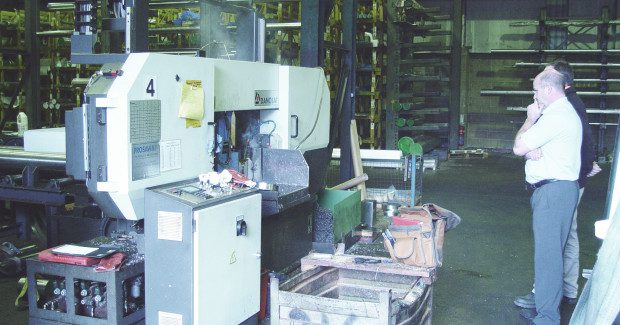Sweeten Your Bottom Line: Ways to Do More with Less
Small changes in sawing can yield significant time and cost savings. Here are some ways to avoid unnecessary expenses by understanding the true cost of your operation.
Posted: July 12, 2012
− Each blade only lasts one day.
− Burden + Blade cost per piece for Blade A is $8.50 each ($800+$50)/150pcs=$8.50/pc)
− Burden + Blade cost per piece for Blade B is $6.00 ($800+$100)/150pcs=$6.00/pc)
This data shows a bottom-line cost improvement of $2.50 per cut. On an annual basis this is a productivity improvement of $62,500! ($2.50/pc x 100 pcs x 5 days x 50 weeks = $62,500) It is often difficult to grasp and accept that doubling your bandsaw blade cost would actually save you $62,500 per year, but that is why the watchword of the decade is savings through improved productivity. The shops that understand this will be the survivors.
Cutting faster drives down costs in other ways as well: shorter lead times for servicing customers bring revenue to the company quicker and, in turn, a higher return on the money the customer has invested in materials. As long as material sits idle in front of the saw, it represents tied up capital waiting to be capitalized. The quicker that material leaves the building, the quicker it rotates the profit flywheel. Faster cut times also offer smaller shops an opportunity to cross-train employees in other areas of production or possibly to work in other time-sensitive jobs, thereby optimizing labor dollars.
Crooked Cuts Slice into Profit
Operators that work with high temperature alloys know that crooked cuts are a chronic problem. Only one or two crooked cuts per week can kill production. Stopping the bandsaw to change blades brings production to a standstill, but more importantly, reworking, recycling, or scrapping crooked-cut material is a huge expense. If crooked cuts are a regular problem, it’s important to understand the total financial loss in terms of lost time production time as this error becomes one of those ‘hidden’ costs that creep into the total cost of the operation. Imagine if someone has just two crooked cuts a week that cause a couple of hours total downtime for rework and blade changes for each incident. In the above scenario, that steals another four hours weekly ($400) and in fifty weeks quickly becomes another $20,000 annual expense to hit the bottom line.
Pinching
Many materials today, particularly high-temperature alloys, have internal stresses that release and cause the material to literally change shape after machining. Blade failure through pinching is sometimes a result of these internal stresses ‘closing in’ on the blade inside the slot being cut. These stresses and resulting pressure can become so strong that they cause the blade to seize up and stop inside the cut or else break off completely.
When a bandsaw blade gets jammed or broken inside the cut, resolving the problem typically involves the use of hammers, blowtorches, a trip to the rework department, and time. Choosing the proper bandsaw blade for the application is critical. If you are currently experiencing blade failure through pinching, the effect on profitability may be even higher than crooked cutting. Specific blade designs and symmetries can reduce the frequency of pinching by 70 to 75 percent.
Cut Finish
A clean cut can help eliminate downstream operations to smooth out the surface of the material. Likewise, a smooth finish can reduce the material waste that is associated with resurfacing, or eliminate it entirely. If clean cuts and reduced material waste are important to your shop, cut finish should be called out as a component in the cost analysis. Proper blade specification can eliminate rough surfaces that require trimming and create excess waste. Cost varies from user-to-user but has been known to reduce annual costs into the six-figure range.
Noise Cost
Excessive noise can destroy hearing, create worker stress and contribute to accidents due to impaired communication and unheard warning signals. Bandsaw blades are known for squealing, often at a high decibel levels. In some cases, the concern over noise level is sufficient to spur an expensive noise abatement program. Identifying the costs associated with hearing protection, miscommunication and worker safety should be factored into the bottom line. Some bandsaw blades are quieter than others. Straight-back blades have a tendency to squeal, while the geometry of more technical blades can keep noise levels significantly lower.
Operator Training
Machine operators will spend an estimated 2,000 hours a year running bandsaw machines and most of this time is on-the-job training through trial and error. Evaluate worker training programs to achieve business goals. Is the shop currently using internal resources to establish a training program? Does the current program meet an ISO training requirement? Would a more robust training and certification program better prepare and retain employees? Access to vendor-based training can save tens of thousands of dollars each year in lost productivity and improved bandsaw operation performance. Attaining a level of certification can further increase employee pride and workplace satisfaction.
Machine Repair
To keep their repair costs low, machine shops may buy into the promise of free machine repair, maintenance and tune-ups. While these value-added services can potentially save money, sawing operations are advised to also look at the big picture. If maintenance programs save a shop $5,000 per year, but choosing a more efficient bandsaw blade can instead save $50,000 per year, the choice is clear.
In sawing, small changes can yield significant time and cost savings. Engineered competitive trials using quality baseline data will confirm that new advances in bandsaw blade technology are helping to reduce cut time, decrease material waste and nearly eliminate unnecessary downtime. By combining new blade technology with vendor-based training resources, bandsaw users have the ability to quickly increase capacity and create a strong, efficient, knowledgeable and sustainable workforce.
Note
[1] A rough guideline to use for your shop Overhead or Burden Rate is to multiply the local labor rate hourly cost by a factor of five to ten, although it is often significantly higher. To better understand exactly what the calculation is for a given facility, there are formulas and templates available on the Internet that you can find by clicking here.







